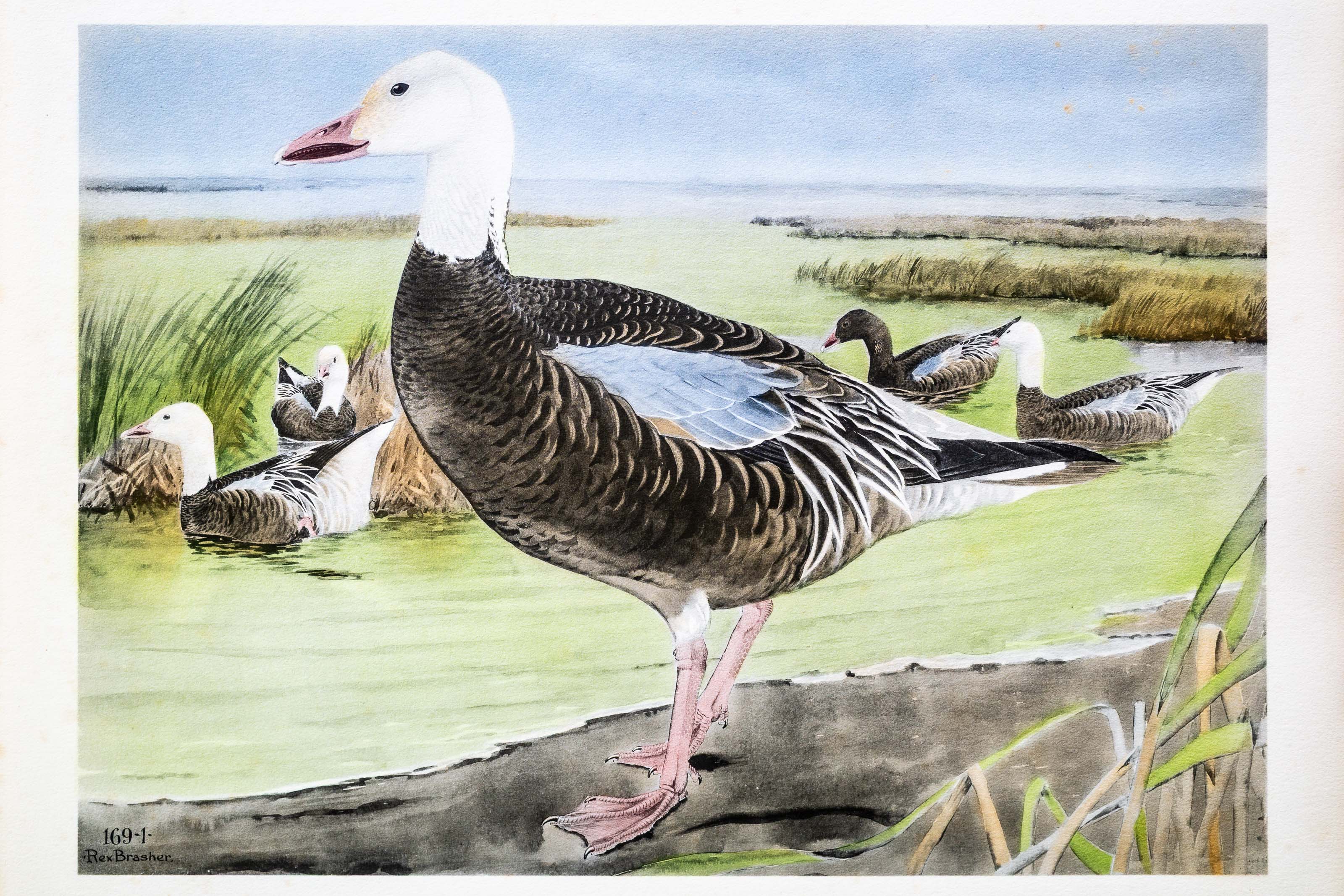
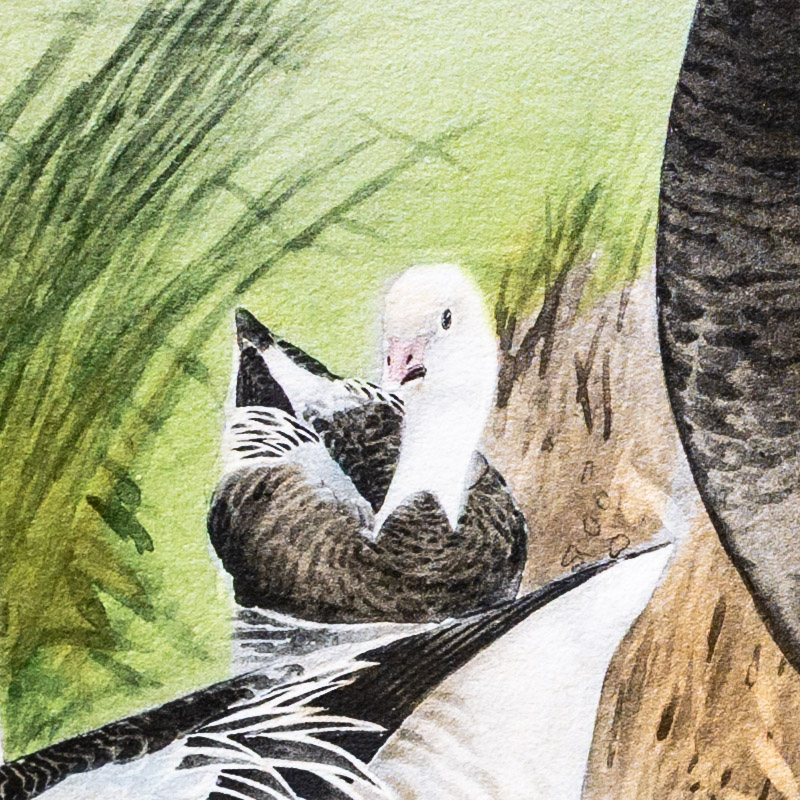
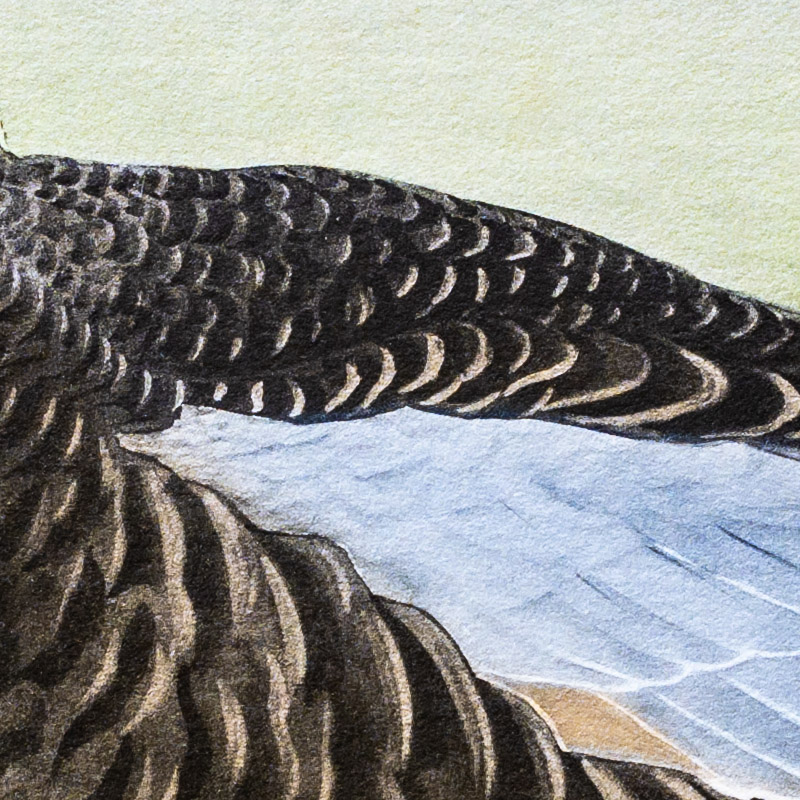
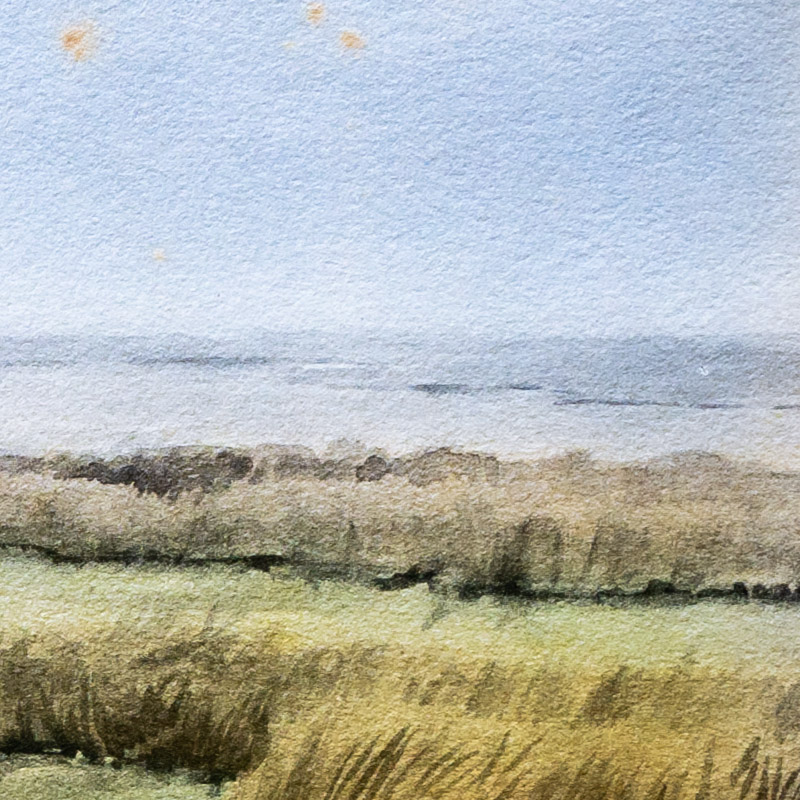
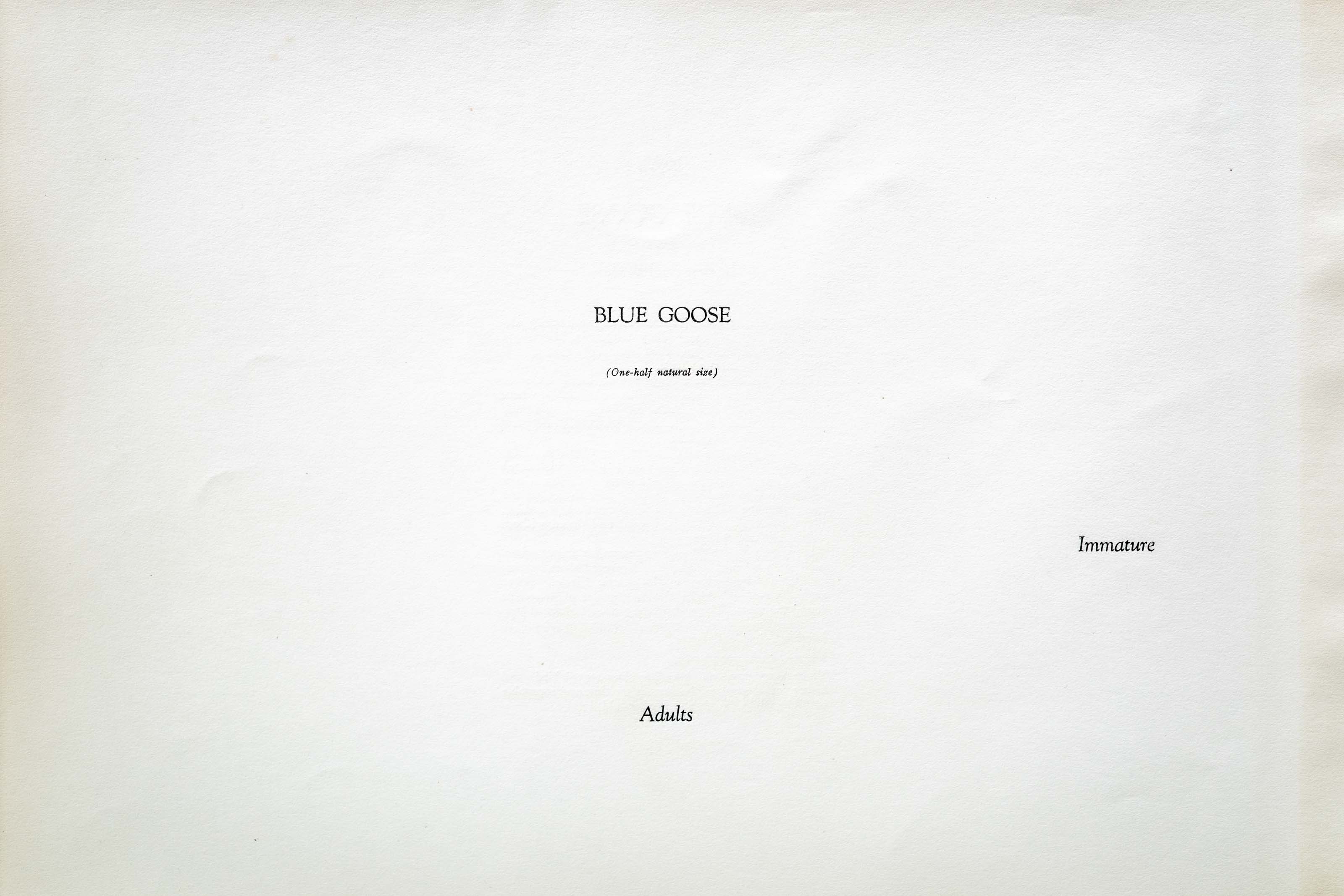
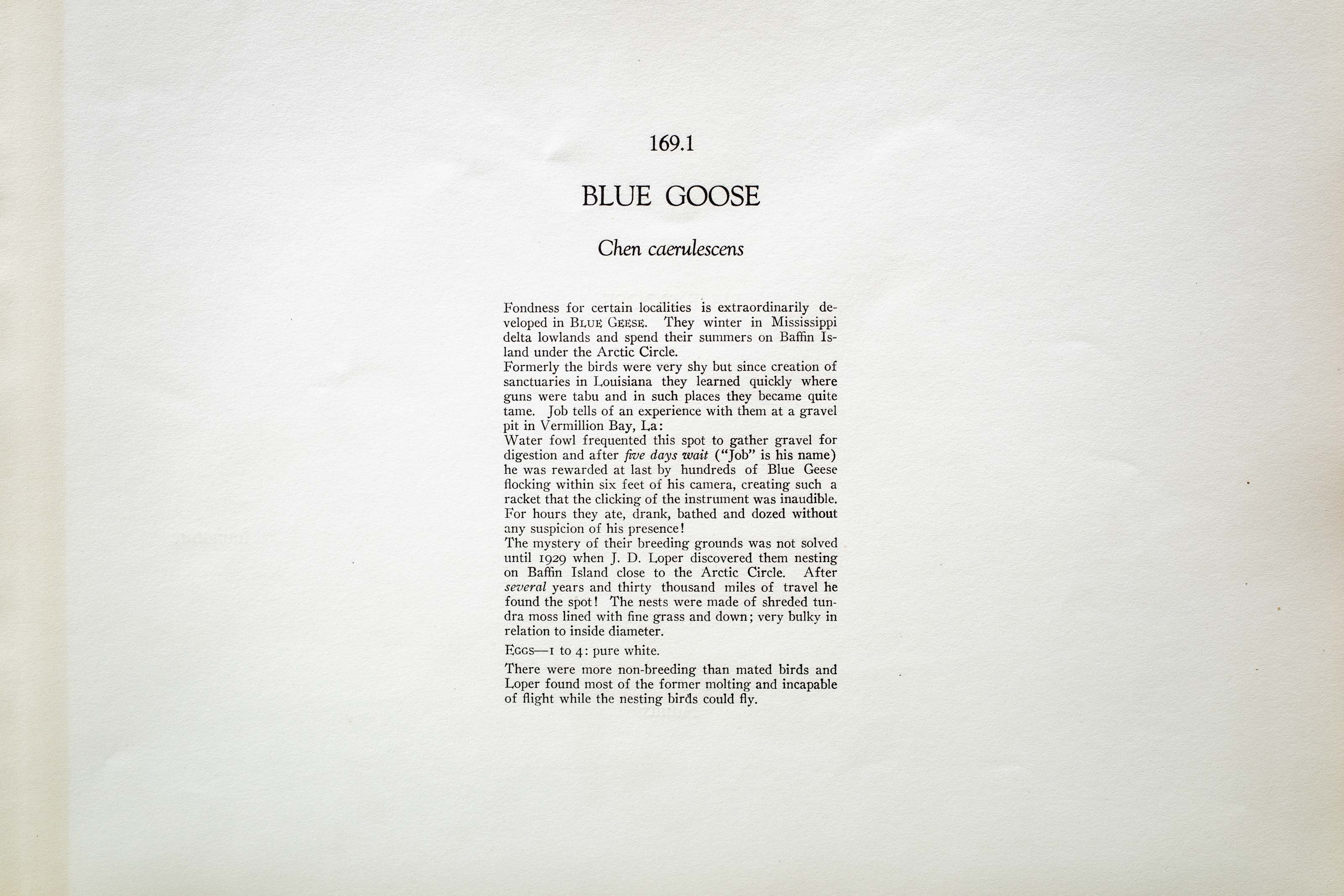

Unknown
1930
3
169.1
A team of dedicated board members, volunteers, and student interns has published every page in Volume 9. This volume includes 360 images of paintings and lyrical descriptions of birds, now available online for everyone to enjoy anywhere in the world. This is a monumental task. Each volume requires approximately 400 hours to photograph, edit, transcribe, catalog, and publish online. We need your support to complete this work.
If you're tech-savvy, have a good eye, are meticulous with details, and love structured data, please consider volunteering by emailing us at hello@rexbrasher.org.
We encourage all bird lovers and supporters to consider a monetary donation to support our mission to make Rex's work available for everyone. You can provide a one-time or recurring donation online.
Fondness for certain localities is extraordinarily developed in BLUE GEESE. They winter in Mississippi delta lowlands and spend their summers on Baffin Island under the Arctic Circle.
Formerly the birds were very shy but since creation of sanctuaries in Louisiana they learned quickly where guns were tabu and in such places they became quite tame. Job tells of an experience with them at a gravel pit in Vermillion Bay, La:
Water fowl frequented this spot to gather gravel for digestion and after five days wait ("Job" is his name) he was rewarded at last by hundreds of Blue Geese flocking within six feet of his camera, creating such a racket that the clicking of the instrument was inaudible. For hours they ate, drank, bathed and dozed without any suspicion of his presence!
The mystery of their breeding grounds was not solved until 1929 when J. D. Loper discovered them nesting on Baffin Island close to the Arctic Circle. After several years and thirty thousand miles of travel he found the spot! The nests were made of shredded tundra moss lined with fine grass and down; very bulky in relation to inside diameter.
EGGS — 1 to 4: pure white.
There were more non-breeding than mated birds and Loper found most of the former molting and incapable of flight while the nesting birds could fly.